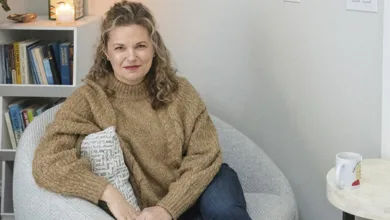To Mask or Not to Mask

Why the Debate?
Facemasks are hot and annoying. They make it difficult for others to understand what we are saying. They obscure our facial expressions, complicating communication. And they are not the most attractive of accessories.
But the novel coronavirus is dangerous — even deadly — to some individuals, and masks can protect against people from spreading or catching it.
So it seems like wearing a mask is a “no-brainer” act of a prudence and consideration. A mask’s advantages would seem to far outweigh their inconveniences.
And yet, we have a raucous national debate about whether individuals should wear masks. Many other countries have a mask mandate without serious objections. Why is the issue both emotionally and politically charged here?
An oft-cited reason against mask-wearing is the claim of individual freedom. The no-maskers assert they have a right — whether it springs from the Constitution, natural law, or God — to go out in public without a mask. The pro-maskers want protection from the potential spread of the virus.
But is freedom really a significant issue here or only a talking point? We all recognize boundaries to our freedom of action. My unfettered right to freedom ends when it bumps up against your freedom. If I want to harm you, my freedom to do so is limited because you have an equally important right to be free of harm from me. There have always been limits on behavior in civilizations, whether proscribed by law or simply accepted as social norms.
If personal freedom is not the real issue, why, then, does the mask debate continue?
In 1957, social psychologist Leon Festinger posited the theory of cognitive dissonance, wherein our answer may lie. Once we form an opinion or belief on a topic, he suggested, our brains are wired to only like statements that support our position. Anything in contradiction with our belief creates dissonance between what we believe to be true and what is presented, making us uncomfortable. The greater the disparity between belief and information, the higher the level of discomfort.
Humans don’t like cognitive discomfort. The more uncomfortable we are, the more imperative it is we actively seek resolution.
So how do we resolve our mask discomfort?
Cognitive dissonance theory offers four courses of action. For example, the no-mask adherent could try the following to reduce internal dissonance.
1. Change behavior to better match the dissonant facts, such as the current medical indications that masks do reduce transmission. Start wearing a mask in public settings, thus changing their opinion and behavior and eliminating the dissonance.
2. Seek opinions and information that bolster the original belief and challenge the medical and governmental recommendations as being in error.
3. Increase the importance of the original belief by focusing more considerable energy on why the freedom argument is so important to their happiness, deserves an active defense, and has greater relative value than opposing beliefs.
4. Decrease the value of opposing beliefs, perhaps by focusing on why others’ rights are relatively unimportant vs. those of the no-masker’s (a high hurdle when the rights of others focus on health and safety).
No-maskers unwilling to change their opinion will likely adhere to options 2-4. As dissonant facts regarding rapidly increasing diagnoses and death counts intrude and challenge their beliefs, the level of internal discomfort escalates — no-maskers may ramp up their efforts to quell the internal dissonance. The result is aggressive and disproportional resistance to the low burden of wearing a mask in public. Do the no-maskers “protest too much” as a manifestation of extreme cognitive dissonance?
The behavior we see may be a result of the brain’s internal conflict resolution process.
Pro-maskers have a corresponding set of choices to reduce internal dissonance when faced with strong arguments for individual rights or questions about the accuracy of medical data supporting masks. They can change their opinion and forego the face mask. Or they can support their belief with affirming data, focus energy on why wearing masks to inhibit transmission is vital, or argue why the personal freedom stance is irrelevant during this pandemic. I seem to have chosen the latter path in my argument above in my attempt to quiet internal discord.
“My mind is made up. Don’t confuse me with the facts.” This sentiment, attributed to a 1945 article by adman Roy Durstine, continues to feel relevant. Does cognitive dissonance explain why the mask debate continues to rage? And can understanding our own internal attempts to quiet cognitive dissonance help us decrease tensions in this national controversy?
I sure hope so.





